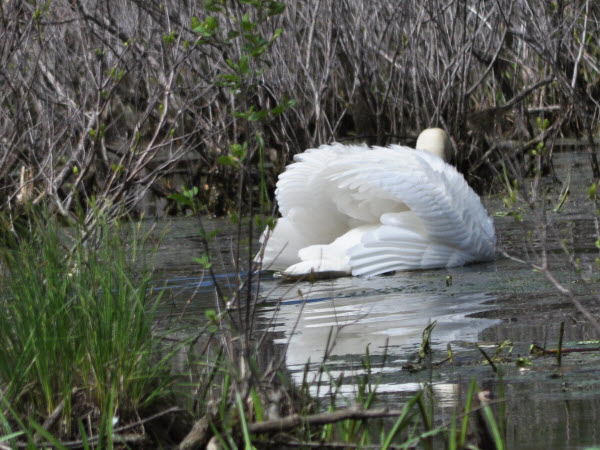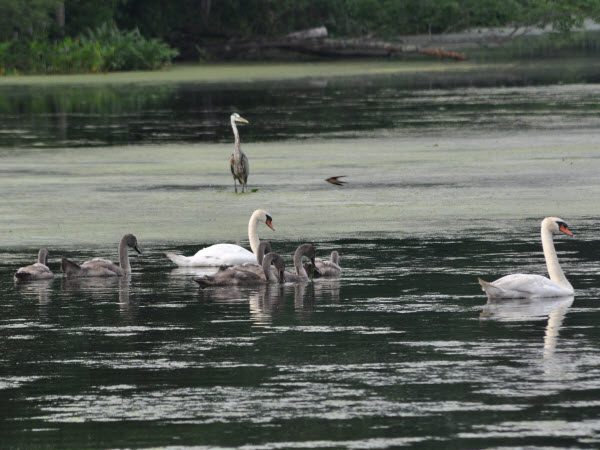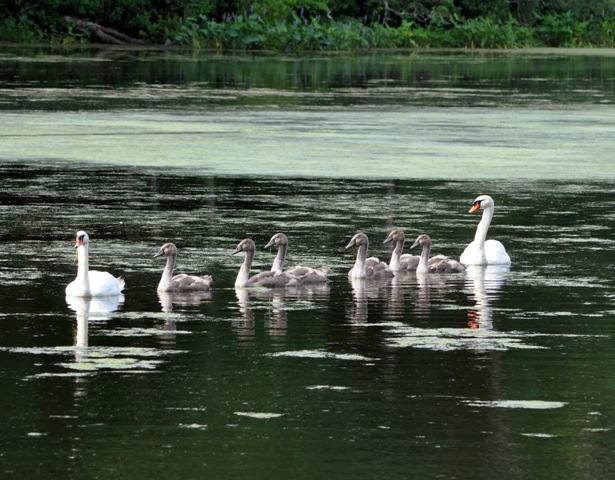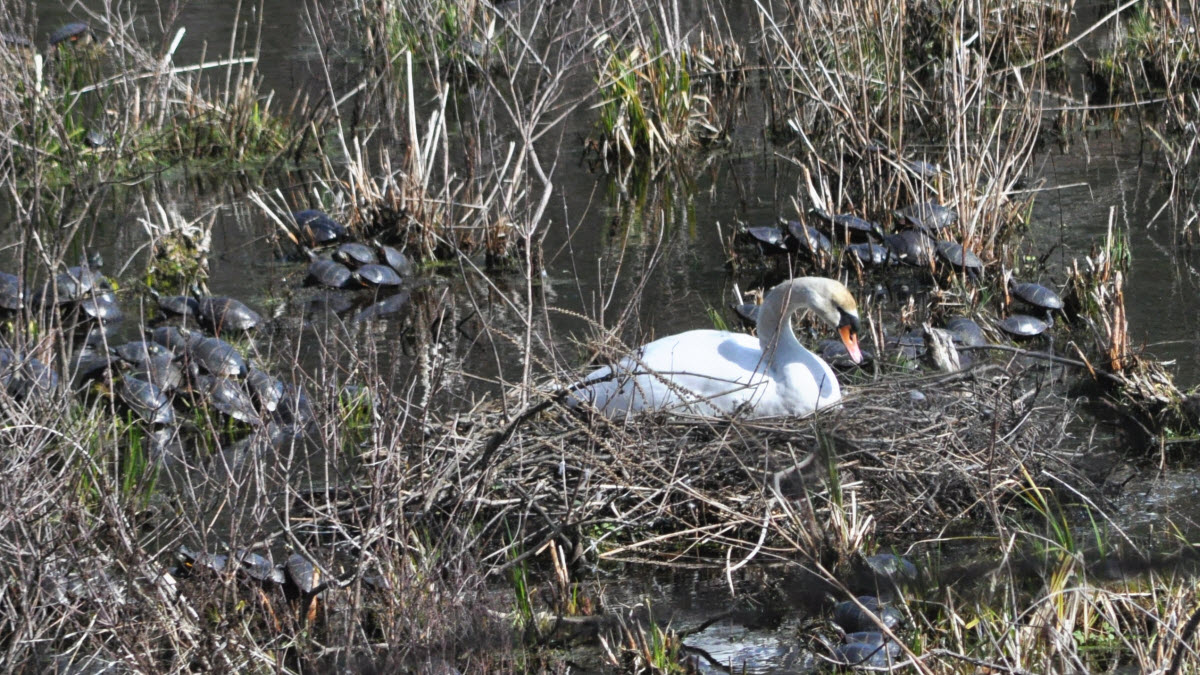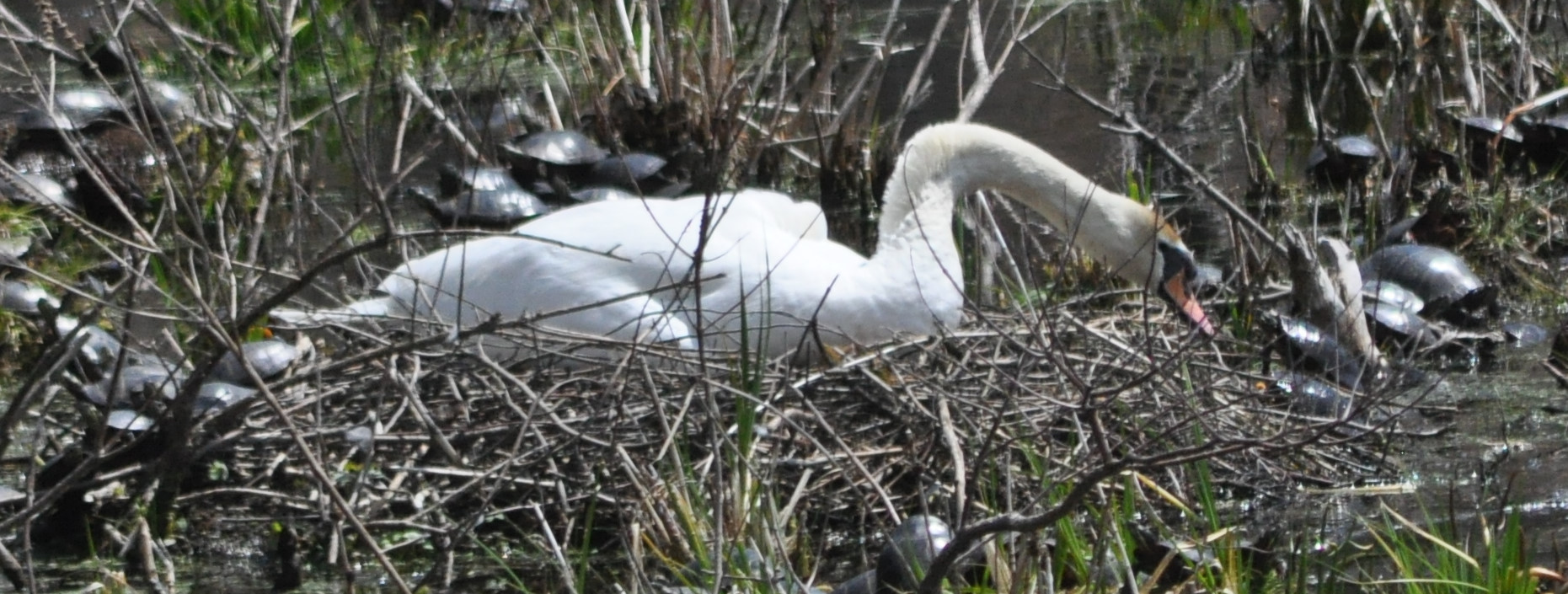Swans are so photogenic - hard not to take at least a few photos when the opportunity presents! And all the more so with cygnets, or babies.
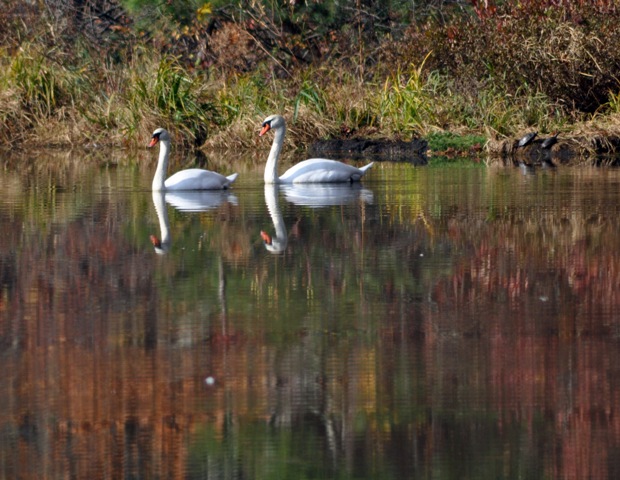

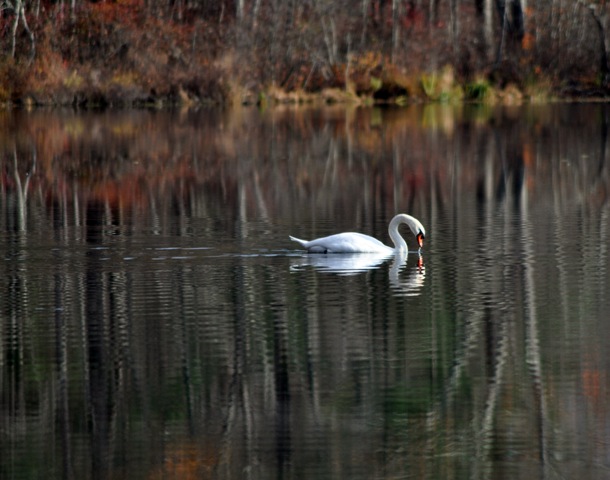
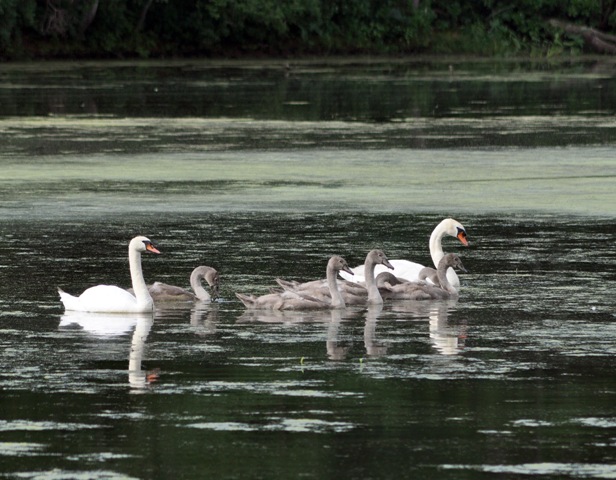
A family of swans consists of a Cob - the male father, Pen - the female mother, and Cygnets - the babies.

How to tell the Cob from the Pen? The knob at the base of the bill, on top of the head, the thickness of the neck, and the relative size of the swan.
The image to the right is a composite taken from the image above - I have simply taken at full resolution just the head and neck of the pen (left) and cob (right) and pasted in side by side.
On the top of the head, at the base of the beak, is a knob - clearly larger on the cob, at right.
The size of the neck is larger for the cob - I wasn't sure, so I measured and found that neck of the cob is 25% larger in this image than for the pen. After I had gone to the trouble of measuring, it seemed obvious to me on just looking!
reference: www.stanley-park-swans.com
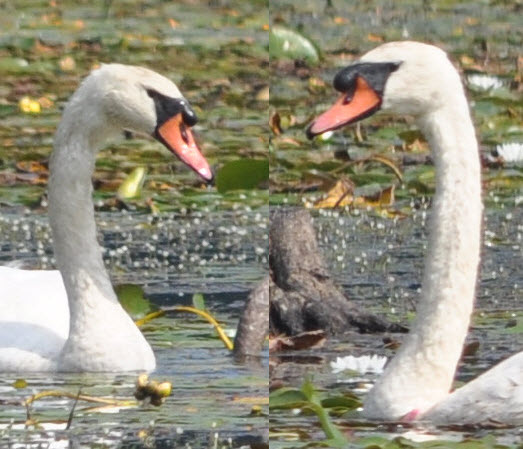
A swan family: Nest to cygnets, 2020
In March 2020 we discovered a pair of swans starting a nest - and soon discovered three more couples along the same stretch of the Assabet River, along the Stow forest. Swans have lived on this section of river year round for years, and the number of families has grown. The river is broad and not too fast, and has a number of point bars - located at the bends of the river, mid-channel, where sediment has built up to form a swampy island separated from the banks - and presumably safer from four-legged predators! Two of the families were nesting on point bars. In one area the river forms a small bay that becomes marshy before reaching the shore, making another good location for a swan family.
These pictures follow these four families over several months time, beginning with the initial building of nests, sitting on the nests and turning eggs, and on to the maturing Cygnets.
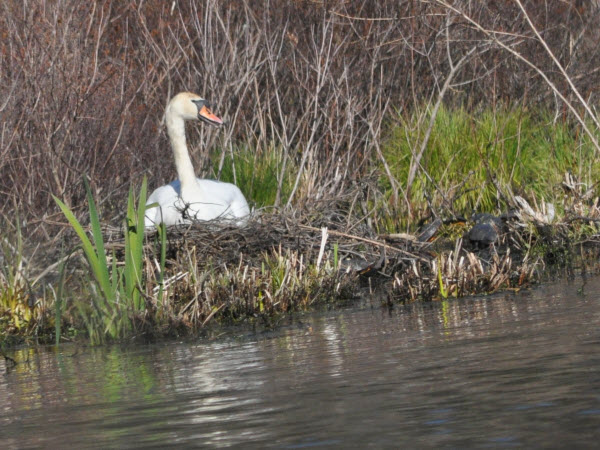
The female swan - the pen - builds the nest, while the male swan - the cob - provides materials (ref: nesting and breeding habits, RSPB). Looking at the photos here, it seems as though it is the male swan building two of the nests, based on the thickness of the neck, and I think there is a clear knob at the base of the beak of these two swans, also indicating a male swan. A little more searching and I find that the male swan often starts the nest, putting in place the underlying structure, and then providing materials for the female swan to continue building the nest (ref: https://www.allaboutbirds.org/guide/Mute_Swan/lifehistory).
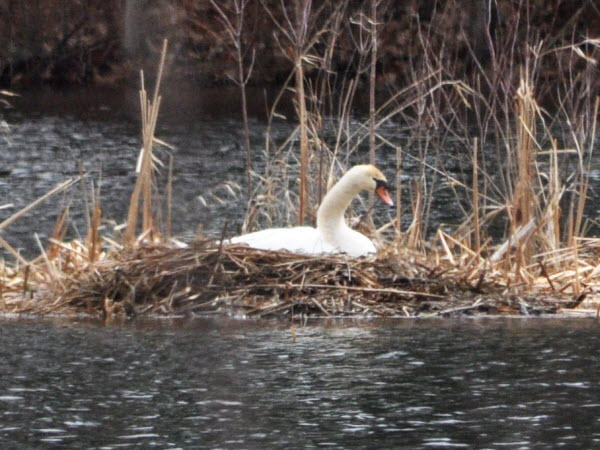
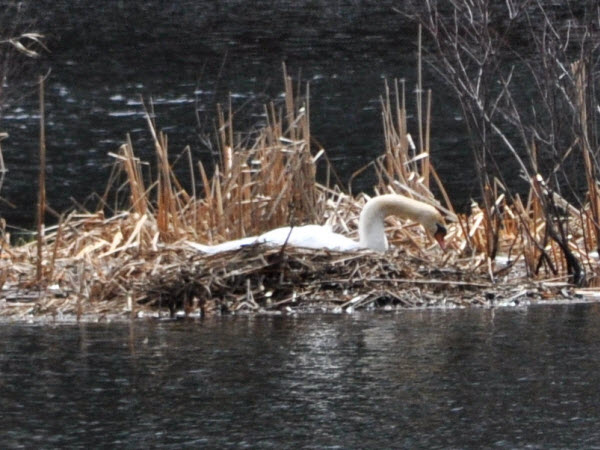

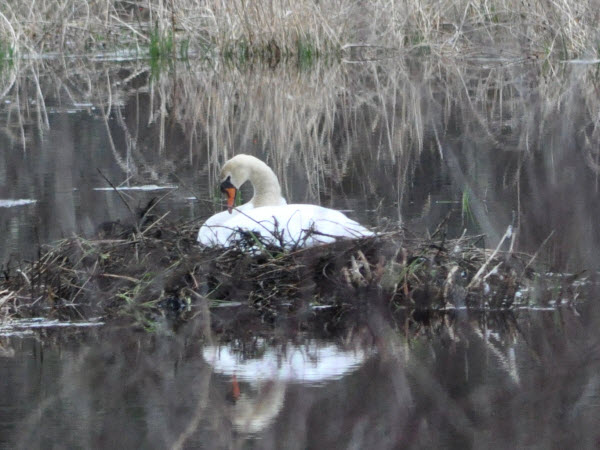
There were hundreds of painted turtles, out sunning on every possible spot. In fact, even in the shallow water there were clearly many turtles, sometimes making the water churn with activity.
While snapping turtles are dangerous to the swans and their cygnets, the painting turtles are quite harmless, even if an annoyance - there was a constant progression of turtles climbing from the river and onto the nest - in front of the swan and behind, and from all sides. I got quite a laugh when the swan reached her bill under the turtle just in front of her and flipped it right into the water!
I searched the Internet and could not find any indication that a swan can or would harm a turtle. I really wondered, though, how this turtle, coming up behind the swan, fared. As I watched through the camera, the swan eyed the turtle for just a few moments, and then in a flash she struck - right where the turtles head had been. I don't have the resolution in these photos to see whether the turtle simply pulled back into its shell, or whether it has been beheaded. But neither did I see it move after the strike. The photos here are clickable, to see the full resolution.
There are nine eggs visible in the nest. With only one direction of view, it is difficult to positively identify each of the nine eggs - it helped to watch the swan turn her eggs. In particular, there is one egg that is farthest back in the group that is very difficult to resolve in the images, but which clearly got her attention.
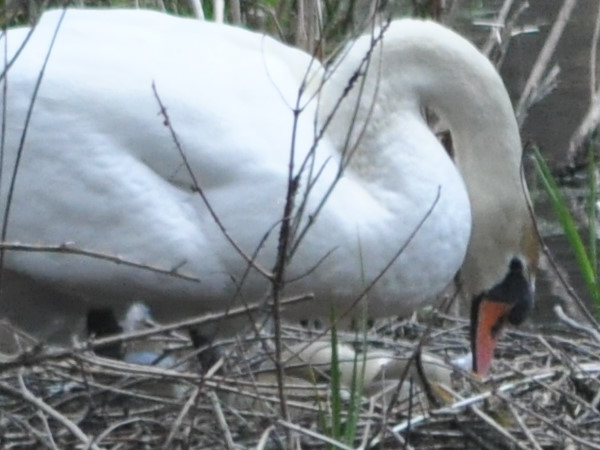
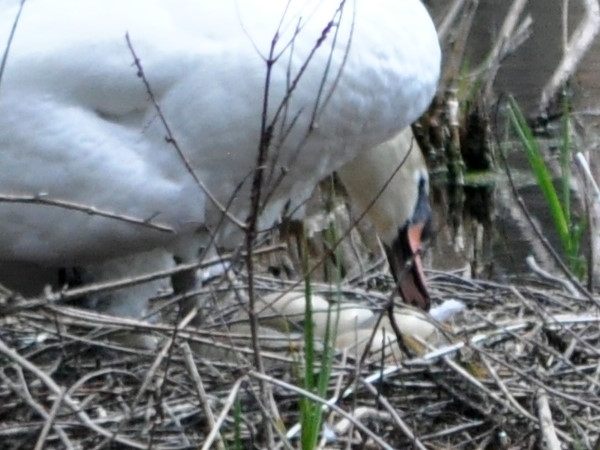
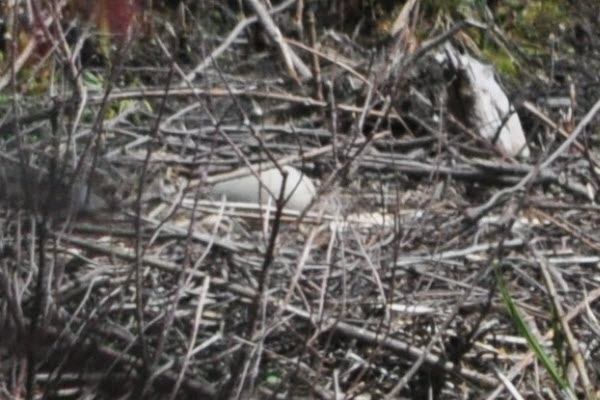
Week 1 - Birth! Eight of the nine eggs hatched - our first clue, of course, was the lone ninth egg in the nest. It had been 6 days since our last visit, the day was very windy and the water was choppy - where was the family? And the answer was - already out on the river! We saw them first in a calm area protected from the wind, but soon after they were out on the main part of the river in choppy water!


Week 4. The cygnets have grown quite a bit, as would be expected. There are still eight, easily counted in the first photo at right, where they spent the night. A different family is shown at left - the photo was taken on the same day, and clearly the cygnets are younger.
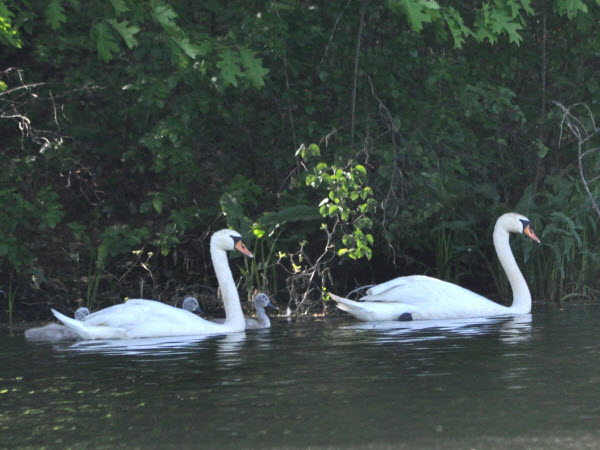
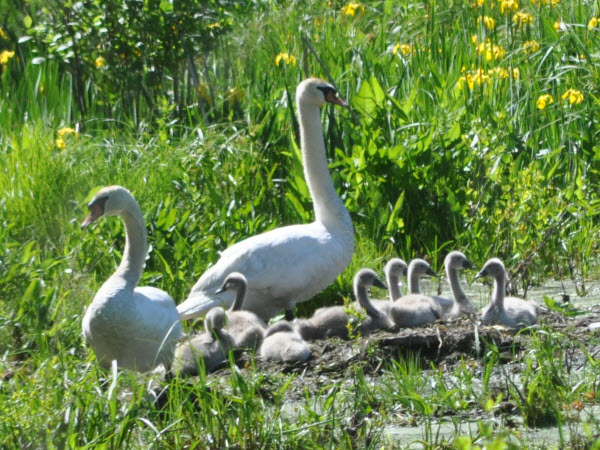
this series of pictures was taken at about 9:15am - the sun had been up for a couple of hours by this time, and the family was still apparently still relaxing where they had spent the night, and not yet out on the water. I spent an hour or so watching and photographing - and was amused to see that it was the cygnets that initiated the breaking of camp and heading into the river for the day! Maybe too many pictures, but entertaining for me.
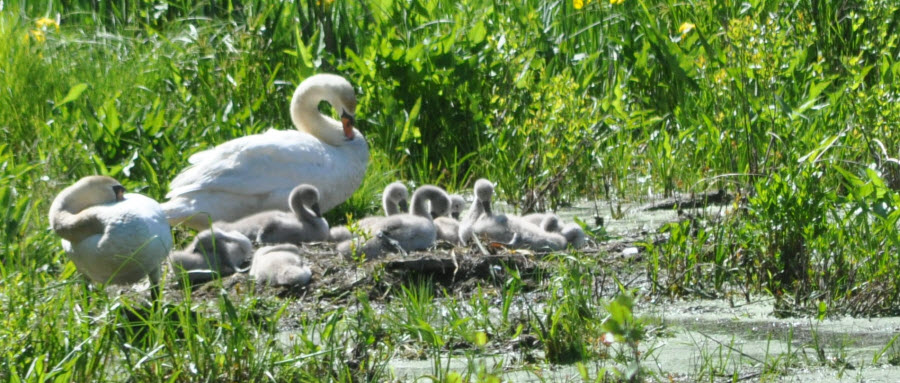
The female swan, pen, is farthest to the left, and the cob to the rear at left. There are three cygnets nearest the pen, and then two are side-by-side, and then the remaining three cygnets.
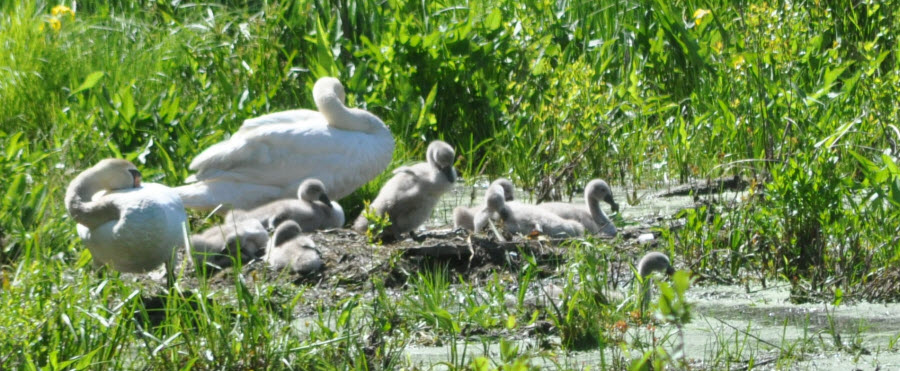
One cygnet is in the water, coming from the two that were side-by-side, and the second of the pair is standing.
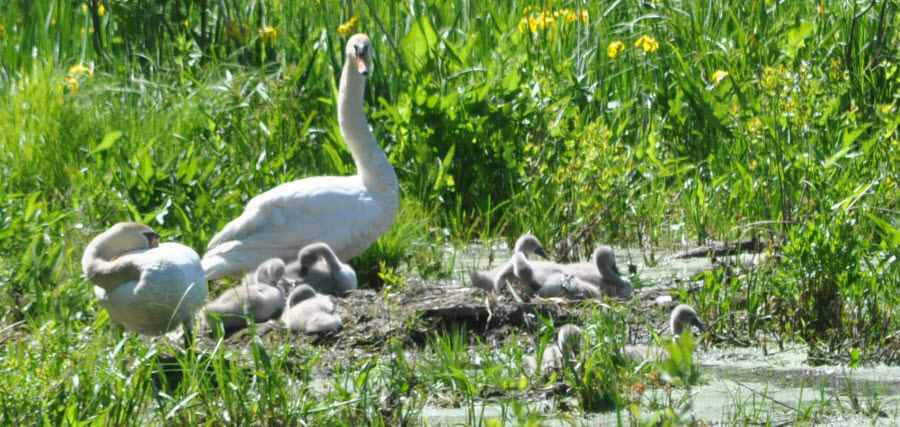
Both of the pair of cygnets are in the water, and the father is attentive.
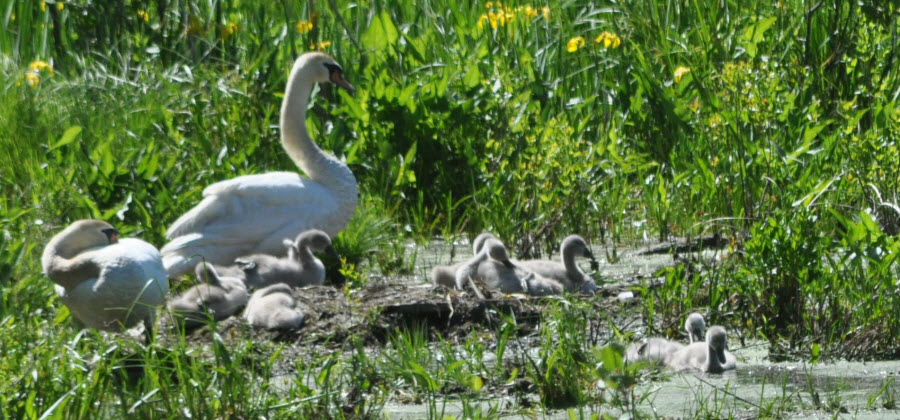
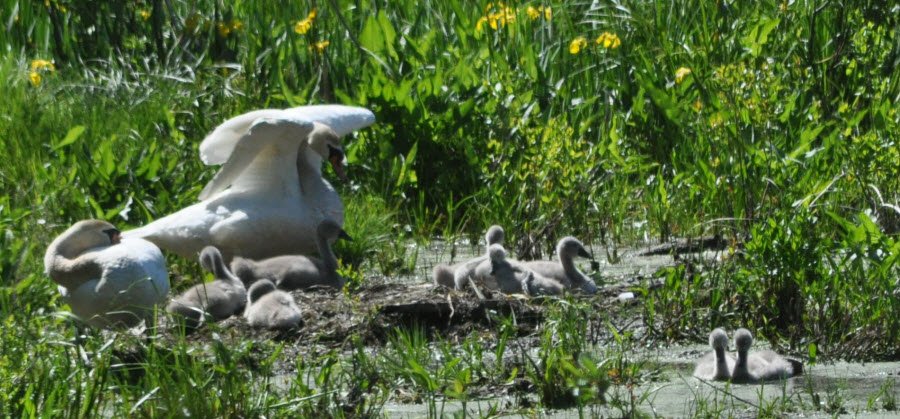
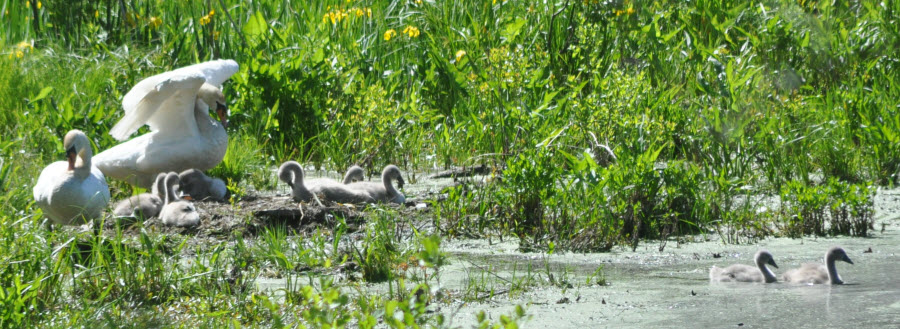

The cob is now heading into the water.

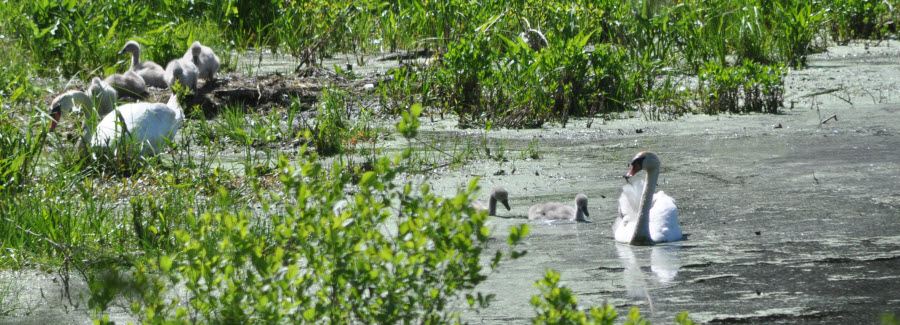
and now the rest of the family is lined up and heading for the water.
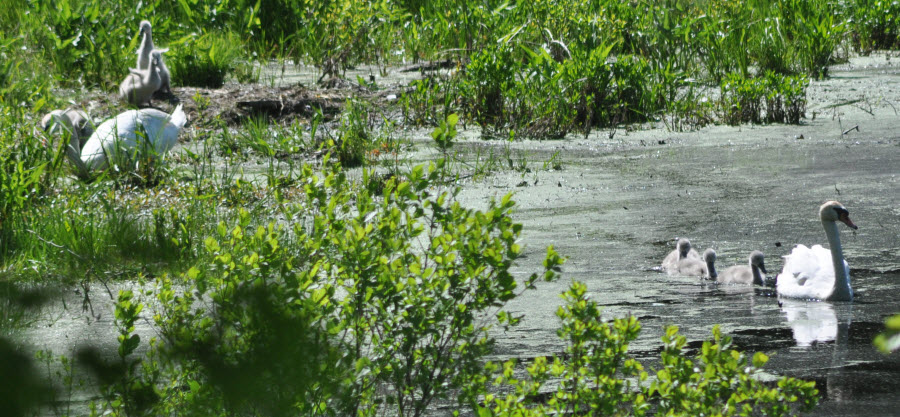
I just love watching as they all fall into line!

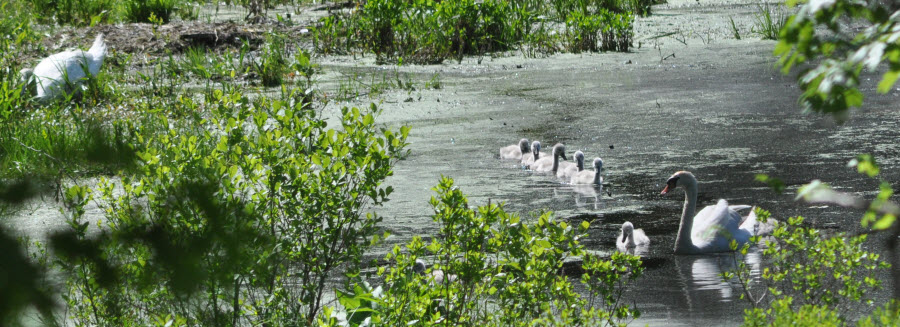
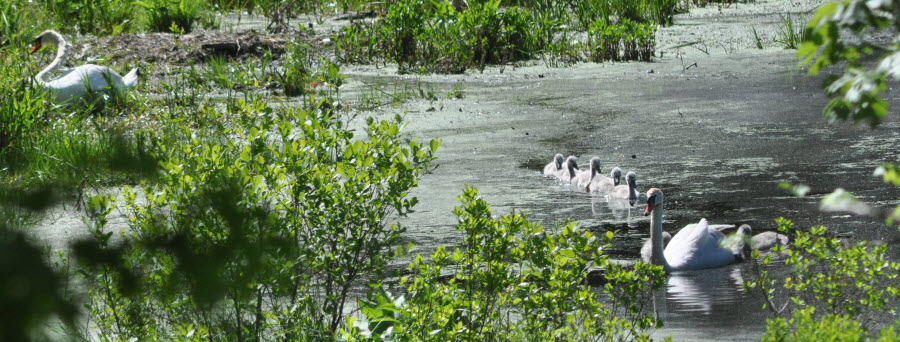

Quite a bit of time elapsed while this family of swans navigated out into the open area of the bay - on the order of an hour! In the meantime, a heron flew in and took up position on the far shore - of course I took photos. Finally the family of swans processed by.

Week 8. We found the family across the bay, sheltered from the wind by a peninsula that shields much of the bay from the river. The sight line was difficult from our location, because of the heavy growth along the bank of the river, but there was a small opening amongst the trees through which I could direct the camera, giving rise to a nice diffuse green frame to the pictures.


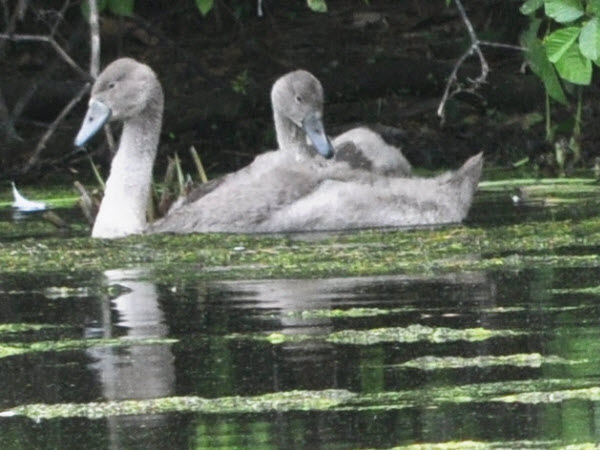
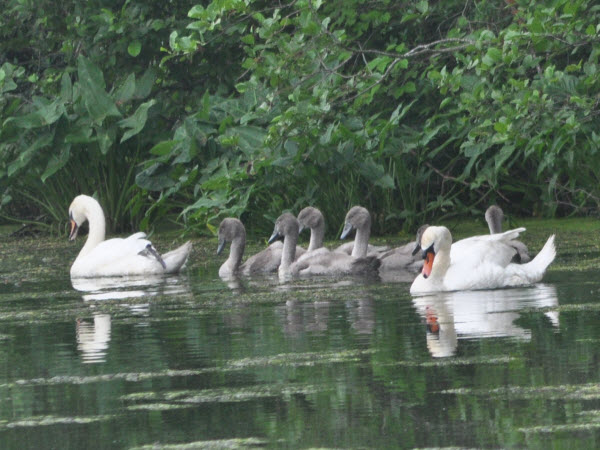
We hiked around the bay and out onto the peninsula, and were rewarded by a much closer view of the swans, although we were now in such dense undergrowth that it was very difficult to see out to the water. For our efforts, we got to hike back to our car in very heavy rain of an active lightening storm!
The swans seem to eat mostly submerged vegatation - even the cygnets. The cob spent a lot of time eating the leaves of the tree branch coming out low over the water - and even the cygnet, below, joined in.
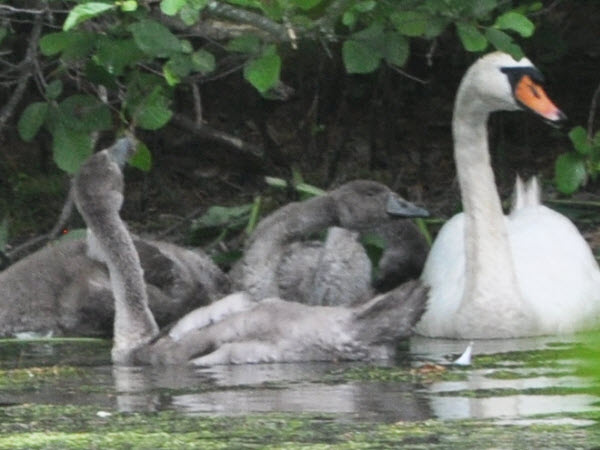
These are mute swans, rather than tundra or trumpeter swans. Not only have I never heard a peep from these swans over many years of watching, but I have never even seen one with its bill open - except to eat, of course!

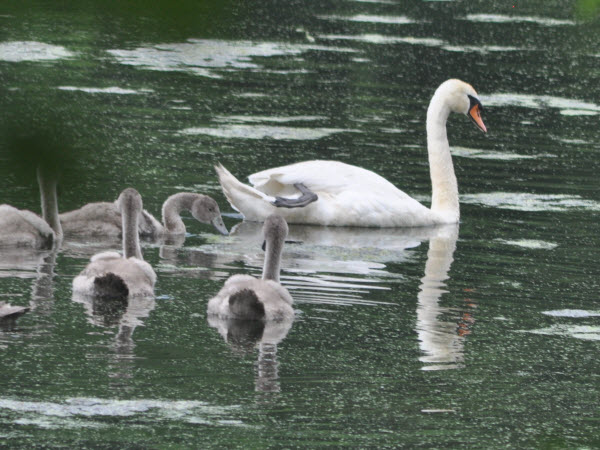
Fairhaven Bay, 2017
The Sudbury river, flowing through Concord, forms a body of water that is on the order of 1/4 by 1/2 mile in size. Along the shore is an inlet area of marshy area that is nearly always very active with many different birds. These pictures were taken in May - I saw only this pair of swans - no cygnets.
I am used to seeing the wings of a swan folded close to the body, as in the picture below left. For a time, the pair of swans I was watching in a nesting wetlands inlet from a river had their wings folded but raised into a more significant structure, seen below right.

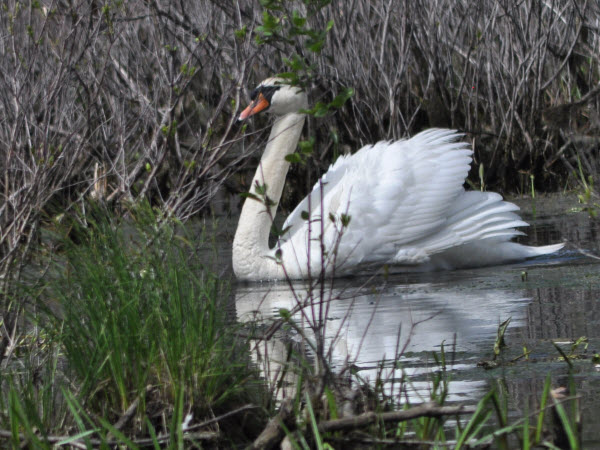
A trifecta - I love finding pictures with multiple components present, especially those that are unplanned. This picture has the swan family, and also a heron, behind, and a swallow swooping through!


